Holi Festival traditions feature vivid celebrations that immerse you in ancient rituals symbolising unity, joy, and the victory of good over evil through the ages.
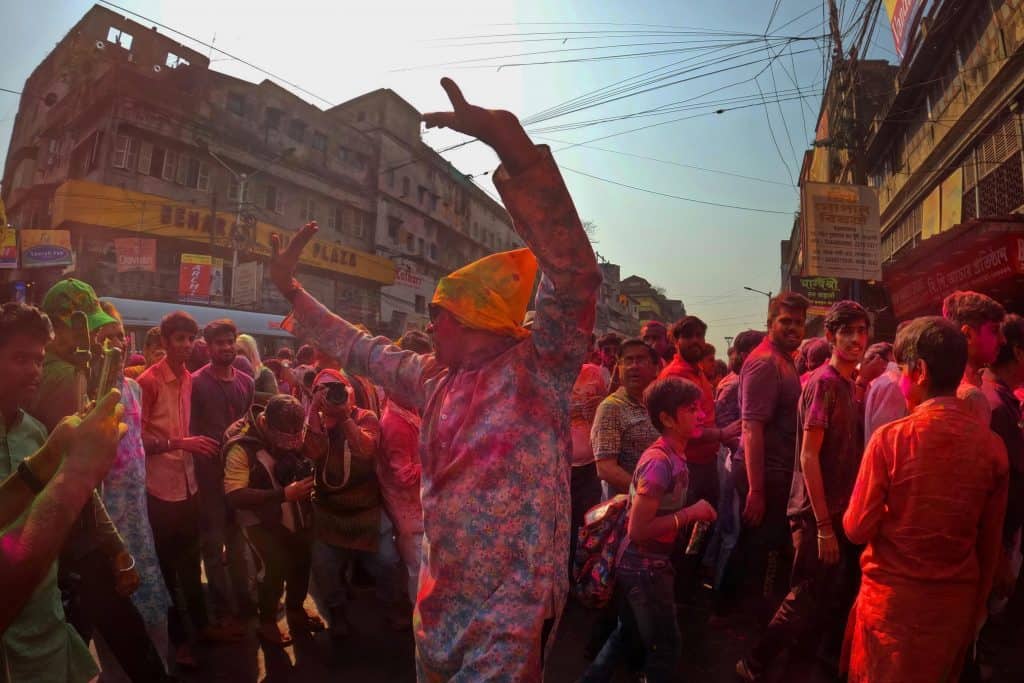
As the world awakens to the first whispers of spring, Holi emerges as a celebration that transcends the mere change of seasons, embedding itself deeply in the cultural and spiritual ethos of communities.
Festival Traditions of Holi
This introduction invites readers on a journey through the ancient alleyways of tradition, where the echoes of laughter, the splashes of coloured powders, and the melodious tunes of love and unity resonate. It delves into the heart of this festival‘s rituals, exploring how each rite and ceremony, from the lighting of the bonfire on Holika Dahan to the playful exchange of colours, encapsulates lessons of life, symbolisms of myth, and the perpetual cycle of good triumphing over evil.
Also referred to as the Festival of Colours, it stands as a widely celebrated Hindu festival with a deep-rooted history, predominantly observed in India. It commemorates the victory of virtue over vice and the transition from winter to spring.
According to mythological lore, it commemorates the tale of King Hiranyakashipu, who arrogantly deemed himself immortal and worthy of divine reverence. However, his noble son, Prahlad, remained steadfast in his devotion to Vishnu and refused to worship his father as a deity. Ultimately, Vishnu, taking the form of a half-lion, half-man, vanquished Hiranyakashipu, thus symbolizing the triumph of righteousness over malevolence, a theme celebrated during festivities.
Holi transcends its vibrant facade, delving into diverse cultural divisions across India. Beyond its colourful celebrations, the festival holds deep ritualistic significance, reflecting various customs and traditions. These rituals enrich the festival‘s essence, portraying a tapestry of cultural diversity woven into the fabric of Holi‘s festivities.
Here are some interesting traditions being followed across India to experience the Holi festival:
Lathmar Holi- Vrindavan
In the realm of Holi celebrations, Lord Krishna emerges as the central deity, revered for his playful antics with the Gopis. Legends recount Krishna’s mischievous escapades, wherein he engaged in spirited revelries, teasing the Gopis with playful gestures. Among these tales, one enduring ritual involves the Gopis chasing Krishna with bamboo sticks, or “Lath,” symbolizing their playful retaliation against his teasing. This tradition, steeped in mythology, continues to be commemorated in Vrindavan, where men don protective leather shields, mimicking Krishna’s defence, while women wield long bamboo sticks, reenacting the chase and playfully “beating” them.
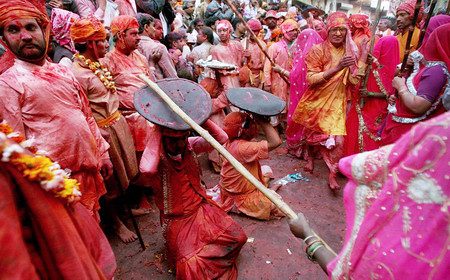
This ritual not only honours the ancient legend but also fosters a sense of camaraderie and joyous celebration within the community. It serves as a vibrant reflection of the cultural heritage associated with Holi, connecting present-day revellers with the rich tapestry of mythological tales.
Through such rituals, the spirit of the festival transcends time, bringing people together to revel in the joy, camaraderie, and timeless traditions that define this colourful festival.
Barsana Samaj Gayan- Barsana
Renowned for its vibrant celebrations, the Brij region boasts a rich tapestry of traditions and rituals that extend over a month-long period. Among these cherished customs is the Barsana Samaj Gayan, a poignant event held at the Radha Rani temple during Barsana Holi. This gathering brings together the denizens of Barsana, who unite to sing the Braj Leela and Holi teasing Bhajans. As part of the festivities, men adorned as Gopis partake in spirited dances, seeking to captivate the hearts of their divine figures, Radha Rani and Krishna.
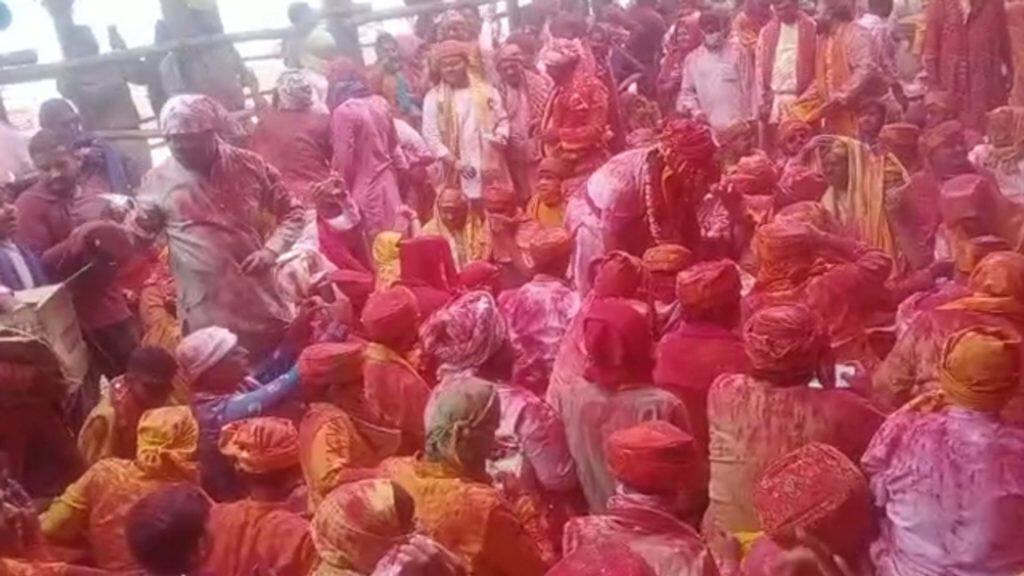
This event serves as a captivating spectacle, encapsulating the essence of Holi celebrations in Brij. The melodic strains of the Bhajans reverberate through the temple precincts, infusing the atmosphere with a sense of devotion and joy. The lively dances of the Gopis add a visual feast to the festivities, embodying the playful spirit of Krishna and the devotion of his beloved devotees. Witnessing the Barsana Samaj Gayan offers a poignant glimpse into the cultural richness and spiritual fervour that characterize Holi in the revered lands of Brij.
Holla Mohalla- Punjab
Also known as Hola, Hola Mohalla is a significant three-day Sikh festival typically observed immediately following Holi. It holds profound cultural and religious importance for Sikhs worldwide. The festivities centre around Anandpur Sahib, where a grand fair takes place. While officially spanning three days, devotees often extend their stay to a week, immersing themselves in various exhibitions showcasing martial skills and valour, as well as enjoying kirtan (devotional singing), music, and poetry.
Central to the celebration is the communal aspect of Sikh tradition, exemplified by the Langar, where attendees gather in Pangats (queues) to partake in lacto-vegetarian meals together. This communal dining underscores the egalitarian principles of Sikhism embodied in the concept of seva (selfless service).
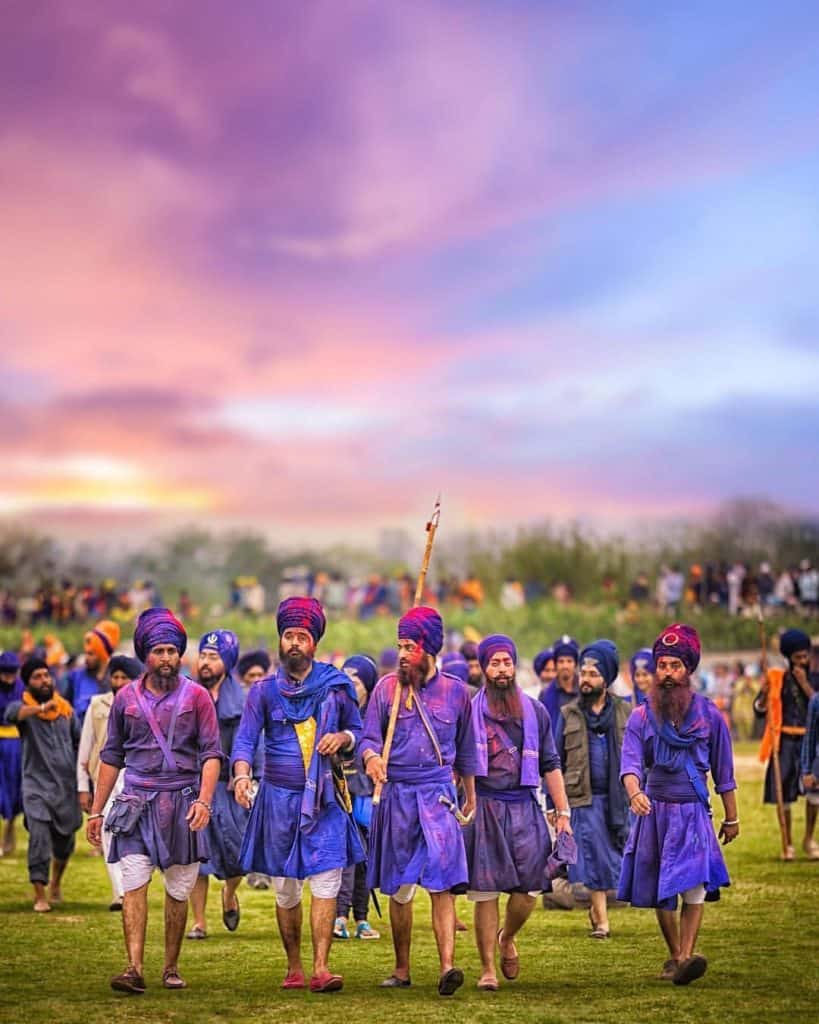
The culmination of Hola Mohalla features a striking “military-style” procession near Takht Kesgarh Sahib, one of the five seats of temporal authority (known as “Panj Takht”) within Sikhism. This procession, marked by its splendour and disciplined march, serves as a homage to Sikh martial heritage and is particularly associated with the Nihang Sikhs, known for their distinctive attire and martial prowess. Hola Mohalla thus stands as a testament to Sikh unity, valour, and devotion.
Dola- Orissa
The Dola festival, also known as Basant Ustav, Pagu Purnima, and Dola Melena Ustav, is a joyous celebration observed over the course of seven days, extending to ten days in some regions. Commencing from Falguna Shukla Dashami and concluding on Chaitra Krishna Pratipada, this festival encapsulates various rituals and festivities. On the auspicious day of Purnima, also known as the full Moon Day, the Holika Dahan (HoliPoda) ustav takes place, symbolizing the triumph of good over evil. Villagers gather in the village Mandap, where the village astrologer (Abadhan) reads the New Panji (Panchanga), imparting insights into the celestial positions and their potential impacts on the forthcoming year.
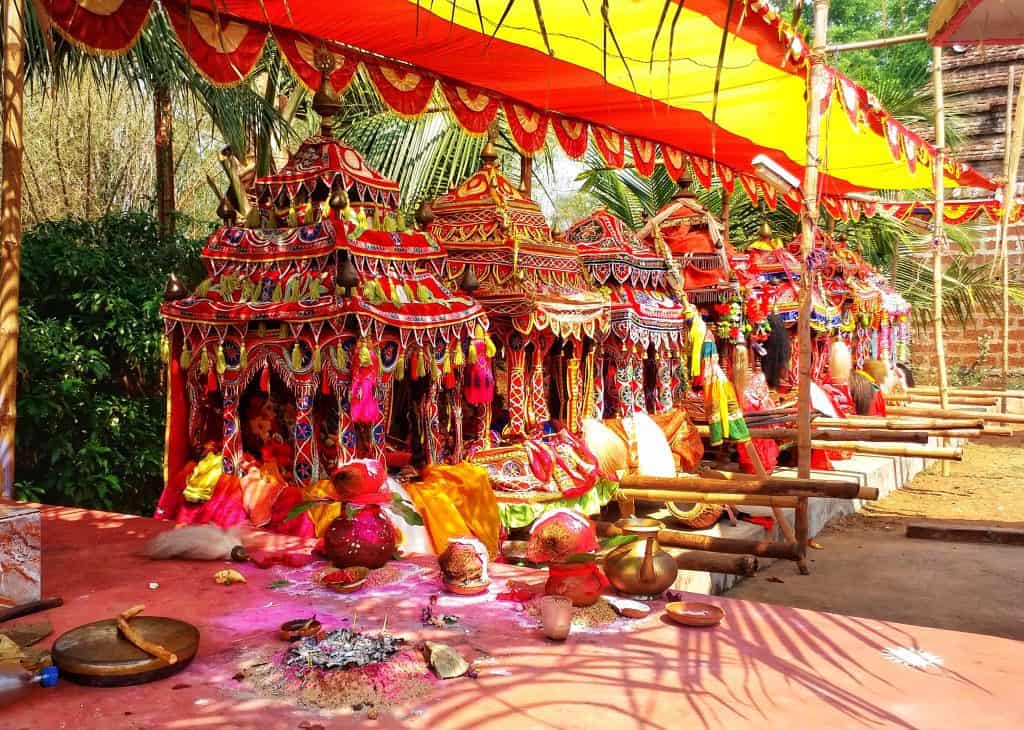
Following Purnima, the Holi ustav ensues, with people joyously partaking in vibrant colour play, also referred to as Fagu Ustav. At midnight, elaborately decorated Vimanas proceed to the Melan, marking the convergence of 14 Dolas. This Melan serves as a culminating event, signifying the end of the Dola Ustav.
Dola Yatra holds significant cultural importance in Odisha and throughout India, synonymous with the spirit of Holi, the festival of colours. The festivities of Holika Dahan and Dola Melan are cherished moments of communal revelry and joy.
Shigmotsav- Goa
Shigmotsav, the spring festival observed by various communities in Goa, holds a special place in the hearts of its people. Known as Shigmo in Goa and Konkan, this celebration is a vibrant display of folk dances adorned with traditional attire. Taking place in Phalgun (February-March), the final month of the Hindu calendar, Shigmo intertwines with the Indian festival of Holi, adding to its cultural significance. The festivities, characterized by lively folk dances and melodious music, captivate both locals and tourists alike, drawing them to witness the spectacle.
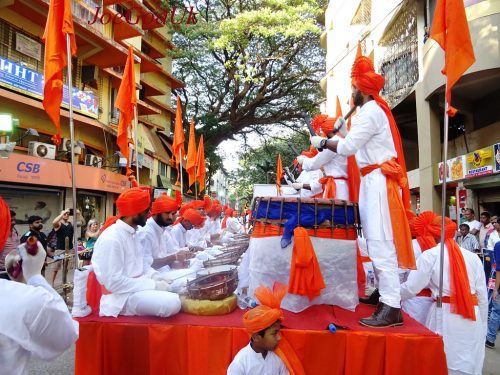
Throughout the State, float parades portraying scenes from Hindu mythology and cultural traditions grace the streets of major towns and cities during Shigmo. Accompanied by Romta Mell processions and groups showcasing local dances, these parades showcase the rich tapestry of Goan heritage. The festival extends beyond urban centres, reaching villages and rural areas, where celebrations span over a fortnight. Each area designates specific days for festivities, marked by diverse rituals and performances.
The commencement of Shigmo sees the invocation of local folk deities on village stages, accompanied by rhythmic beats of traditional percussion instruments like the ghumat, dhol, mhadle, and tashe. Colourful processions known as romta mell traverse from one village to another, embellished with mythological installations and adorned with painted faces and traditional costumes. Among the myriad folk dances performed during Shigmo, Ghodemodini, Gopha, and Phugadi stand out, reflecting the cultural richness and heritage of Goa. In essence, Shigmo serves as a poignant reflection of Goan culture, uniting communities in celebration and reverence for their traditions.
Huranga-Mathura
Huranga represents a spirited and robust manifestation of Holi festivities, distinctively observed at the Baldeo temple in Mathura, two days following the conclusion of traditional Holi celebrations. Dedicated to Lord Baldev, the elder brother of Krishna, this temple serves as the focal point for the exuberant Huranga festivities. While Holi in Braj unfolds over the course of a month, Huranga commences once these Holi celebrations draw to a close, signifying a culmination of the joyful season.
The vibrant Huranga revelries take place within the temple’s premises, where residents of Braj gather to partake in spirited singing, colour-throwing, and merry-making. The lively ambience resonates with joyous melodies and kaleidoscopic hues as participants engage in playful exchanges of colours. This communal gathering serves as a fitting finale to the extended Holi festivities in Braj, encapsulating the essence of camaraderie and jubilation shared among the local populace.
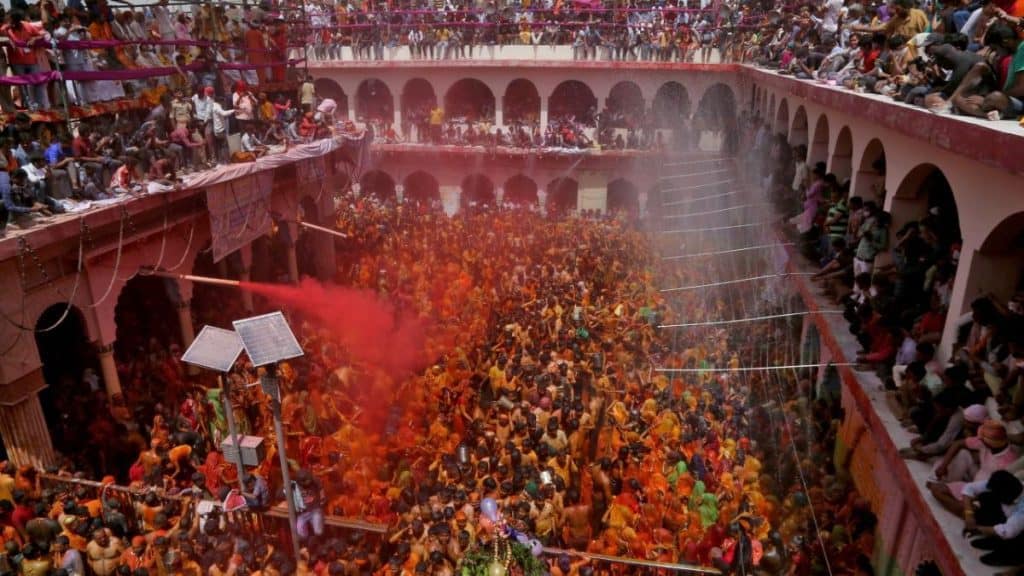
As the curtains draw on Huranga, it symbolizes the conclusion of the Holi celebrations in Braj, leaving behind cherished memories of unity, laughter, and vibrant cultural expressions. Thus, Huranga stands as a testament to the enduring spirit of Holi and the rich cultural heritage of the region.
Culinary Delights Of Holi
Holi, the vibrant festival of colours celebrated across India, is not only a time for joyous revelry and camaraderie but also a delightful occasion for indulging in a plethora of culinary delights. As families and communities come together to mark the arrival of spring, they engage in a culinary extravaganza, treating their taste buds to an array of mouthwatering dishes.
Delight your tastebuds with these famous dishes that can enhance the Holi celebrations:
Gujiya
The most cherished Holi delicacy is the irresistible gujiya. Its sweet aroma, along with that of karanji, ghugra, or karajikai, permeates the air weeks before the festival commences. Regardless of whether you find yourself in Jaipur, Guwahati, or Hyderabad, gujiya and its assorted variations are integral to Holi’s culinary traditions nationwide.
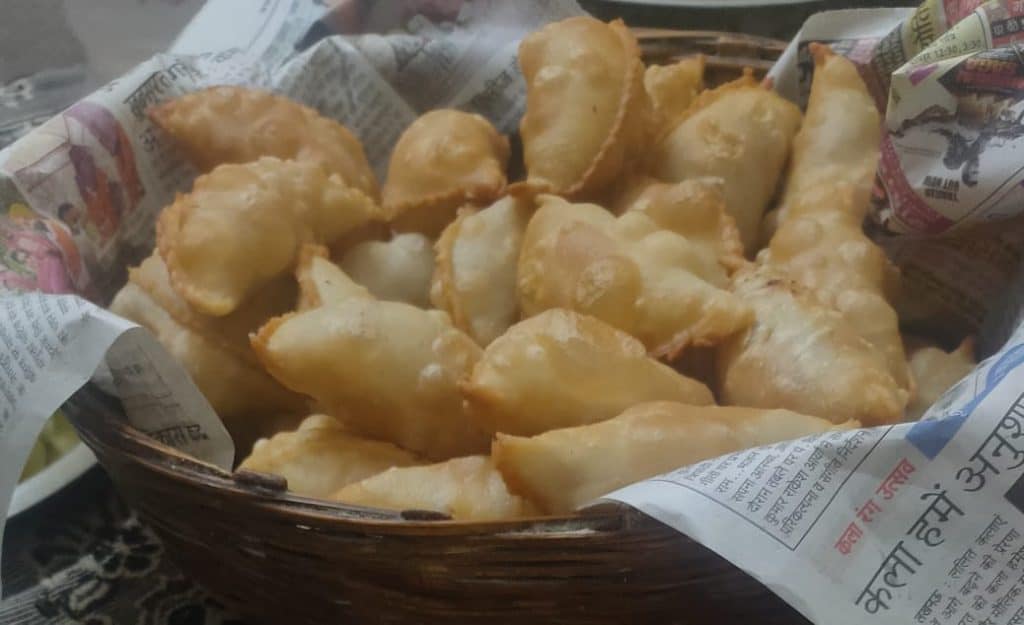
Nowadays, you’ll even find options like baked and diabetic-friendly gujiyas available at numerous confectioneries. However, can anything truly compare to the indulgent pleasure of sinking your teeth into this exquisite Indian pastry?
Dahi Bhalla
When it comes to culinary delights prepared for Holi, dahi bhalla stands out as a ubiquitous appetizer found in every household or gathering steeped in tradition. Refreshing, tantalizing, and utterly satisfying, dahi bhalle holds universal appeal. Many Indian families boast their own unique recipes for this dish, which they lovingly prepare not only for Holi but also for various festivals throughout the year.
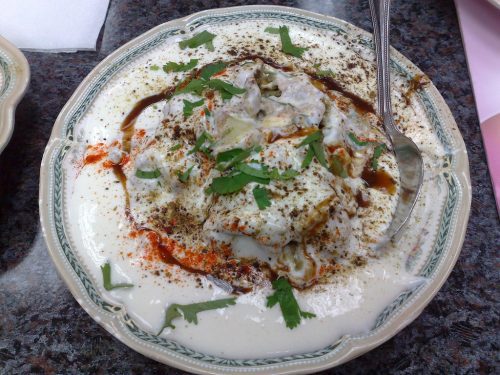
Once you’ve tasted a plate of homemade dahi bhalla, it becomes an unforgettable experience, leaving you craving for more and reluctant to settle for anything less.
Thandai
Thandai, widely celebrated as one of the quintessential beverages for Holi festivities, is crafted from chilled milk infused with an assortment of dried fruits, seeds, and fragrant rose petals. Let’s face it, there’s a particular ingredient we all secretly crave in our thandai–bhang. Indulging in a hearty glass of thandai, especially a generous Patiala serving, before engaging in the joyful revelry of Holi with loved ones is an experience that should not be missed.
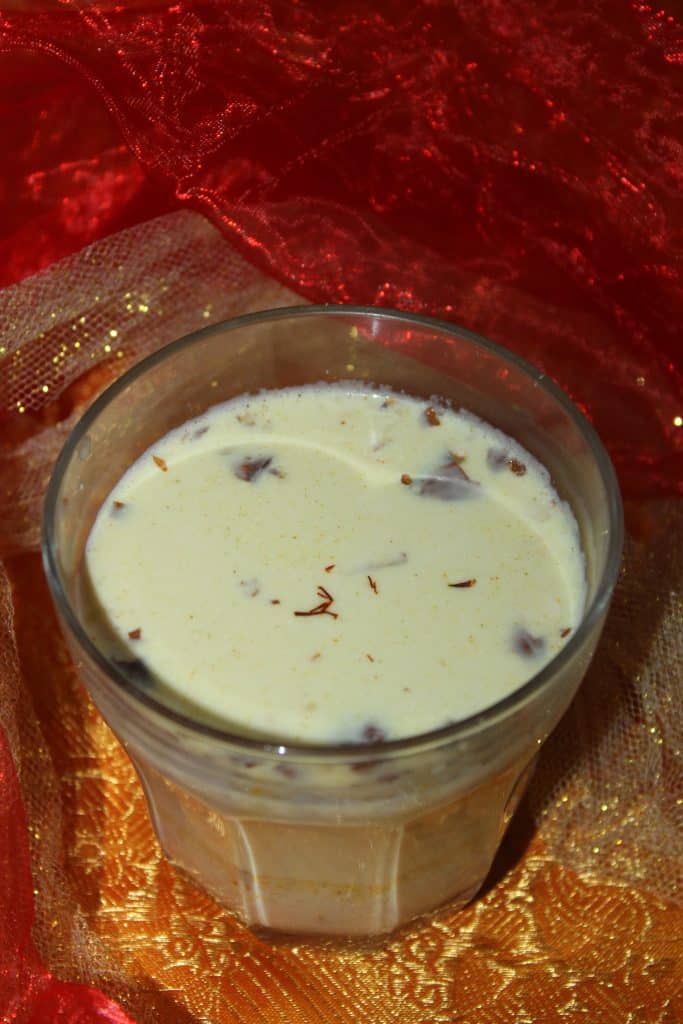
Kanji Vadde
With an abundance of sweets tempting us during Holi, it’s easy to overindulge. Admittedly, many of us lean towards savoury and tangy snacks. For aficionados of spicy treats, kanji vade holds a special place in the heart. This Holi delicacy, bursting with sour and spicy flavours, brings pure joy to the soul. Prepared with black carrots typical of the spring season, kanji doubles as a probiotic beverage.
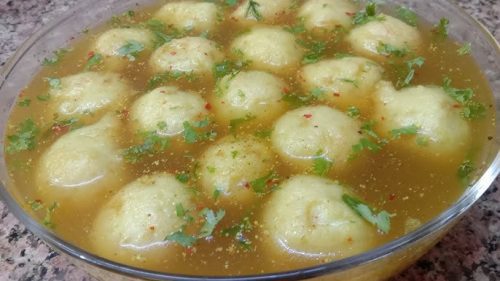
Phirni
Phirni, a delectable rice pudding, undergoes slow cooking over hours with milk, sugar, almonds, and a selection of subtle spices. This meticulous process yields a sweet delicacy that can elevate your Holi festivities to new heights. Today, sweet shops and eateries offer innovative twists like pineapple phirni, paan phirni, and mango phirni, expanding its flavour palette. Traditionally presented in earthen bowls or matkas, phirni is best enjoyed chilled, garnished with a delicate strand of saffron atop its creamy surface.
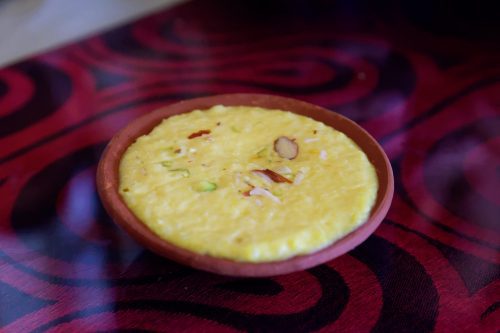
This exploration has not only brought us closer to understanding the cultural and spiritual significance of Holi but has also invited us to partake in its universal message of love and togetherness. As the colours of Holi fade into memories, the lessons and the spirit of the festival continue to resonate, reminding us of the power of community and the strength found in our shared humanity.
Read more: Latest



